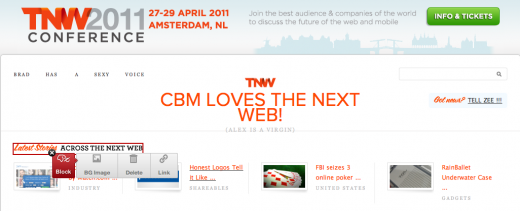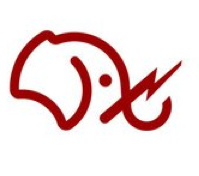
Brothers Jamie and Matthew Roche are quite the pair. After the two studied together at Yale, they moved to California together to build houses. In the momentum of Silicon Valley’s tech boom, they launched an Internet company named Offermatica, which they say is “the defining software for the AB multigrade testing marketplace for landing page optimization”. It is now called Adobe Test and Target and gets 5 billion impressions per week, dwarfing all of its competition, combined.
After selling the company to Omniture in 2007, (which was later bought by Adobe), the two took up surfing and hanging out in California. After reading everything Kurt Vonnegut ever wrote, the two brothers decided to revisit Offermatica, but said, “What if we make it better and signicantly easier again? Let’s put the control of the content back into the hands of the people who know what to say- not the engineers, not the software use experts, but the creative people, the marketing people, the merchandising people.” In 2010 in San Francisco, BO.LT was born. BO.LT’s service is a truly revolutionary way of using the web and the company could very well join the Verb Hall of Fame, alongside Tweet, Tumble, Google and Facebook.
Jamie and Matthew Roche are the Co-CEOs of BO.LT, a page-sharing service that lets users instantly copy, edit, customize and share virtually any web page. In other words, it turns web pages into shareable objects just like how we now act with links, images and videos. To set sail on this venture, BO.LT received $5 million in Series A funding from Benchmark Capital in 2010.
What does it mean if you can share pages the way you can share images? These pages should be set free.
-Jamie Roche
There are 700 million links shared every day on Facebook alone. Stale, un-engaging content gets lost. Allowing the reader of the page to recreate and mold the experience, we allow the page to become new, fresh, and relevant as it moves through social networks.
-Matthew Roche
How it works:
- Paste a link into BO.LT or use the easy BO.LT bookmarklet and the page is copied onto their high-speed delivery network.

- The bolted copy is given a short URL that can be customized for simple sharing.
- To edit: click on any part of the page, and you will activate buttons that allow you to delete or modify text, images, links and other areas of the page. Just click Undo or “u” if you make a mistake. Hit “Done” when you’re finished editing to save your newly-crafted page.
- You can also share the link to the newly bolted copy on multiple social networks.
- Even after your bolted link is shared or posted, other users can modify the content.
See if you can spot my 4 edits below:

“This can be a lot to process. There’s a holy cow moment. This is game changing. All you have to do is grab the web address and paste it into BO.LT. Hit copy and our systems have created a perfect copy of that page,” says Matthew.
For marketers: “We heard marketers say, ‘I have 8 sets of content and I want to tweak it for a lot of different conversations,'” explains Jamie. BO.LT’s service solves the problem of marketers and website owners being locked into a static message when their audience is changing so quickly on the social web. By using BO.LT, marketers can change linked-to content even after the links are sent, allowing marketers to quickly and easily create targeted out going communications. Copy, edit and share a page in under 2 minutes? That’s a realtime web conversation that fundamentally changes the way that marketers can relate to their customers.
For publishers: When pages are copied, BO.LT pulls data and analytics from the original ad server, so the integrity is not lost for the publisher. It’s actually great for a publisher because if someone clicks on the ad on a copied page, the publisher gets the money just as if someone had clicked on the ad on the original page. Whereas Flipboard just distributes publisher’s content without also distributing the benefits of a publisher’s ads.
For individual users: Once a web page is bolted and put it on BO.LT’s servers it’s a copy of the content rather than just a link. This could be great for bloggers who want to save up a portfolio of their content. It’s also wicked awesome if you want to create a few April Fool’s pranks, which BO.LT had quite a bit of fun doing this past April.
Viewers can easily see the original page by clicking the “View Original” icon on the right hand side of each bolted page. BO.LT also applies an identifying “sticker” to each bolted copy to preserve the integrity of the original page and allow the person participating in the content process to get an ego boost from seeing their own name on it.
Types of BO.LT accounts:
1. Anonymously using BO.LT is like Bit.ly on steroids with anonymous link backs to customizable bolted pages. (This is where the identifying stickers are very important.)
2. If you log into the system, you can receive up to 10,000 page views per month and “bolt” all you like.
3. BO.LT charges for the professional, corporate category based on volume, in a price range similar to Amazon web services.
How does the technology work? At the core of this system is the BO.LT delivery network of distributed servers to bring the content closer to people. BO.LT is its own cloud. BO.LT employed their own servers all over of the United States. While the service works abroad, European servers will be up in 2 months, maximizing the experience from abroad. It’s not simply moving files across, BO.LT has to look at the page to verify that they are loading correctly and that the ads and analytics are in tact.
The web is made of billions of pages, and there’s no way to share those pages the way that we can do so easily with images and videos. Yes, you can share a link but it can also die or be ineffective when a website updates. “It’s not a question of should this be done or not,” says Jaime. “It’s what’s the best way to do this?
“If we want to amplify the reach of content, we must involve its consumer. What we’ve seen with Flickr and YouTube is that when people get involved in the creative process, the object moves more; the photo gets seen more, liked by more people and that’s a virtuous cycle,” says Matthew.
“It’s easy to see the negative side of this content creativity. But with any great technology, there’s always a good chance it will be abused. Yes, theres a relationship with content generators and content forwarders that is inevitable. If people do bad things with other people’s content, it pisses people off,” says Jamie. “The really advanced thinking here that publishers and marketers need to embrace is releasing the grip of their content. They need to recognize that sharing is a good thing in many cases. Customers are acting like unpaid marketing amplifiers.”
 If SEO is search engine optimization, SMO is social media optimization then BO.LT is leading us down the path of AMMO, amplified marketing and media optimization. With BO.LT publishers will see instantly that traffic is moving a certain way- something was stumbled, liked, changed. Now it will be up to them to see how quickly they can respond to the information.
If SEO is search engine optimization, SMO is social media optimization then BO.LT is leading us down the path of AMMO, amplified marketing and media optimization. With BO.LT publishers will see instantly that traffic is moving a certain way- something was stumbled, liked, changed. Now it will be up to them to see how quickly they can respond to the information.
At SXSWi this year in Austin, Texas, BO.LT tested a theory, What won’t people do for an iPad 2? They held a challenge to give away the coveted tablet to anyone who agreed to get the BO.LT elephant tattoo. One French passerby got a free iPad 2. Watch it here:
Get the TNW newsletter
Get the most important tech news in your inbox each week.





